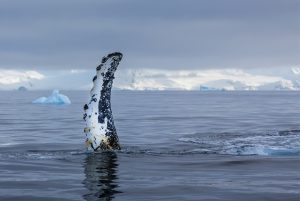Nudibranchs: Ocean health indicators?
Scientists are keenly interested in nudibranchs for two reasons. One is they believe the chemicals these animals store could be used to develop new medicines for use in humans. One compound stored by nudibranchs called Latrunculin A is the subject of ongoing research to develop new treatments for cancer and neurodegenerative diseases.
Secondly, the DNA of nudibranchs may offer insights into ocean conditions relative to climate change. Global warming threatens the genetic diversity of some marine species and compromises their ability to evolve as undersea environments change. A population explosion of any one nudibranch species may serve as an early warning system for further problems.
Recent multi-year warming events have caused a 2,000-kilometre patch of the Pacific Ocean to heat up several degrees above normal, a phenomenon meteorologists have taken to calling “the Blob.” As if on cue, nudibranchs normally found in southern California began appearing farther north, signalling a potentially troubling shift in the coastal ecosystem. The Blob is also believed to be responsible for an unsettling decline in spawning salmon returns in British Columbia, resulting in less food for whales, sea birds and other marine species, along with unseasonably hotter weather patterns on land.
For now, British Columbia’s nudibranchs appear to be doing just fine. The greatest present dangers for our local nudibranchs are habitat loss or degradation and being harvested for the aquarium trade. But any changes affecting their normal food chain could prove detrimental as the world’s marine ecosystems continue to experience environmental impacts from global warming.
Are nudibranchs the proverbial “canary in the coalmine” for both the ocean realm, and our own survival? Time alone will tell, but there is evidently much more to these beautiful “butterflies of the sea” than meets the eye.
Jett and Kathryn Britnell are underwater, wildlife and expedition photographers, internationally published writers, explorers, scuba divers and speakers. Both are Fellows of the Royal Canadian Geographical Society, The Explorers Club and the Royal Geographical Society. Jett is presently serving a two-year term as Regional Director BC/Yukon in The Explorers Club’s Canadian Chapter. Follow them on Twitter and Instagram.









